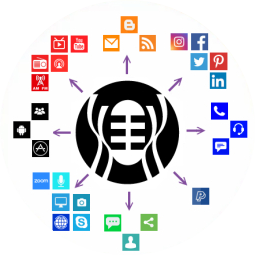Without good (should be great, but weâll settle for good in a pinch) sounding audio your listeners will abandon your show someone who is putting out something they enjoy listening to.
Follow these 10 best practices for studio-quality sound for your live show and podcast:
- Position the mic at your mouth level, about fist-width from your mouth, slightly angle too high will cause you to have a deep sound. Too low will cause you to have a nasal sound.
- Use a POP filter and a Boom mount – both will reduce unwanted sounds in your recordings. Turn off your phone – There’s no reason to have your phone even in the same room as you during a podcast. It will only mess you up.
- When possible, hardwire into your modem – For remote interviews on Zencaster or Squadcast and especially on Zoom the better internet connection is preferred. Wire your computer directly to you modem for the best speed.
- Close any auto-updating apps/ programs on your computer – The common culprites here are Dropbox, Google Drive, email apps, social media, Slack and other chat apps.
- Control your environment – If possible a small irregular shaped room filled with soft things will reduce reverberations and echo, it will give you a true sound. Think about the opposite of a conference room.
- Your broadcast partner and producer of your show will record your show but you can easily do this as well using any of the recording software around eg: Audacity.
- Take it easy – If you mess up, misspeak, that’s OK and makes for an authentic live show. Some of those mistakes can be cleaned up by your producer of the podcast, just mention it to them at the end of the show.
- Don’t rush things and stay calm – this is not a life and death situation and mistakes happen, particularly as you are learning. It makes for an entertaining live show and easy to edit the podcast.
- No moving air – Turn off all sources of moving air. Things like heaters, air conditioning, fans and open windows will cause all sorts of unwanted sounds on your recordings.
- Make sure your microphone is plugged in, turned on and selected to your recording software. Seems obvious but this has tripped up even the best of show hosts.
I hope these 10 tips help you record better sounding audio. If you have any others to share I’d love to hear from you via email at info@tonilontis.com If you’d like to check out my podcasting secrets unleashed you can do that here.







